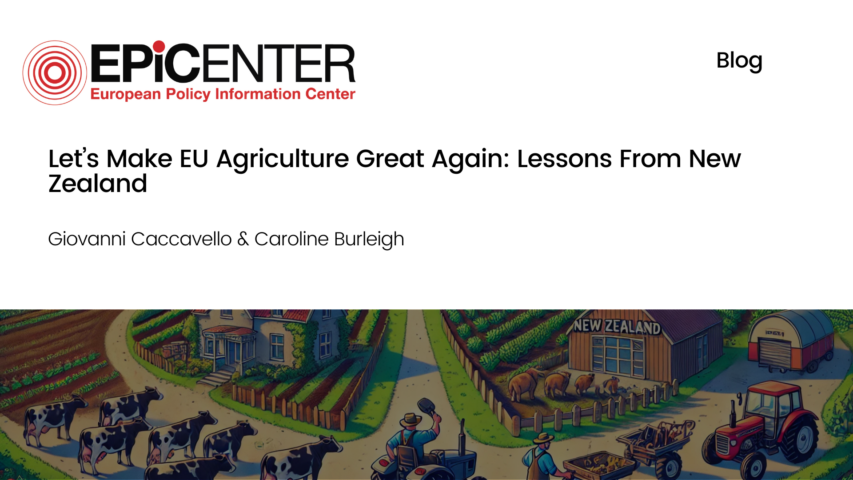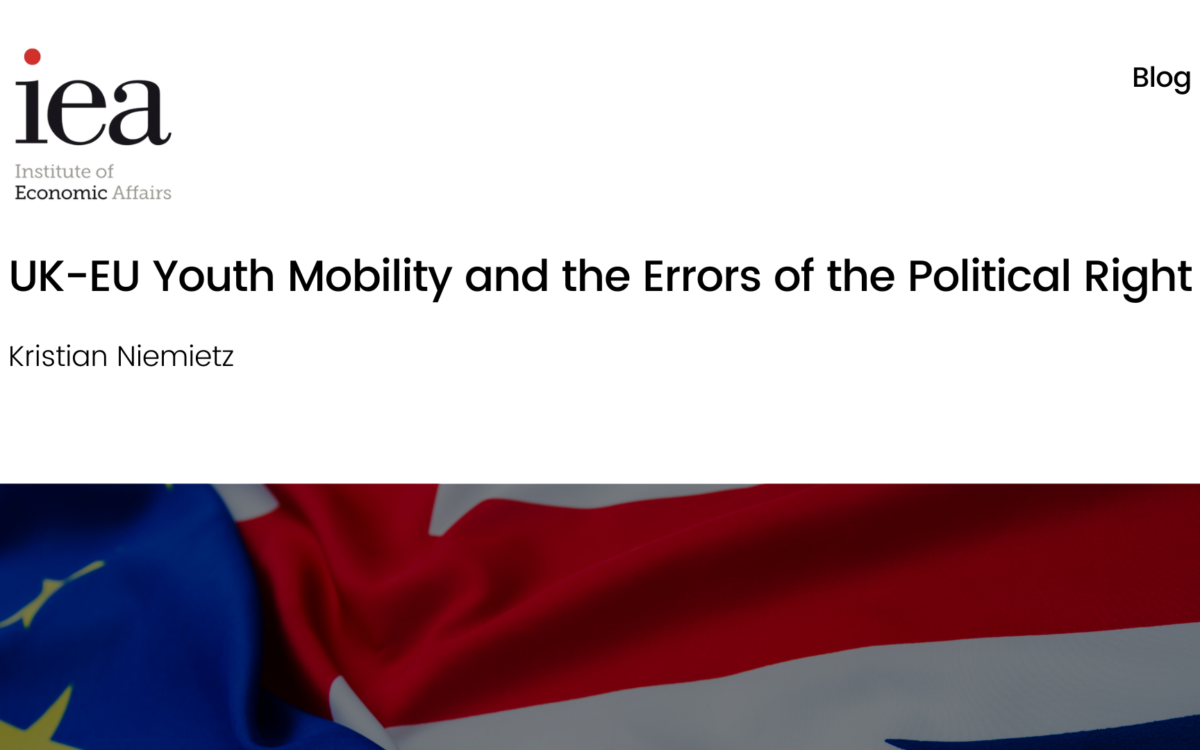Let’s Make EU Agriculture Great Again: Lessons From New Zealand

Let’s Make EU Agriculture Great Again: Lessons From New Zealand
Giovanni Caccavello & Caroline Burleigh // 27 April 2017
As the debate on the modernisation and simplification of the EU’s Common Agricultural Policy (CAP) gathers pace, European policymakers are called – once again – to re-think Europe’s farming sector.
Despite the several waves of reforms that have shaped the CAP since the early 1990s, many market- and trade- distorting practices still persist. As the latest OECD Agricultural Policy Monitoring and Evaluation report (2016) underscores, EU Member States still remain disproportionately dependent on public support when compared to other developed countries, such as Australia, Canada and New Zealand.
Given the current state of affairs of Europe’s agricultural industry, a prime example of modernisation, simplification and liberalisation comes from New Zealand. Just like today’s farmers in the EU, New Zealand farmers were heavily protected by price supports, subsidies and other restrictive measures in the 1970s and early 1980s. On the contrary, today New Zealand is one of the few countries in the world that has abandoned price support systems and enforced free trade policies for agriculture.
This thrust of economic deregulation in New Zealand was driven by two sets of circumstances. Firstly, there was dissatisfaction with economic growth rates in the 1960s and 1970s under a generally protectionist regime. Secondly, there was an urgent need to rein in government intervention in the economy.
Interestingly, the reform of the New Zealand agricultural sector was a policy of both the ‘left’ and ‘right’. Following the 1984 administrative turmoil and major currency crisis, the initial liberalising measures were introduced that same year by David Lange’s first Labour government and were continued by Jim Bolger’s conservative administration (Johnson, 2001).
Starting in 1984, subsidy programmes for agricultural products were either abolished or phased out. The reforms – albeit radical – were some of the most successful worldwide, allowing the sector to overcome the cycle of waste, inefficiency and corruption that still characterises agriculture in the EU. In addition to productivity growth in the agricultural sector, which increased from 1% before 1984 to 4% in the ‘90s and today still remains around 2%, there were positive spillover effects in the rest of the economy (Lambie, 2005). In fact, since the mid-1980s, real GDP growth has averaged 2.5% per year and with a GDP per capita (in PPP terms) of around US$ 40,000 the country is today considered to be one of the most innovative, freest and open economies in the world (World Bank, 2017a).
On top of this, the country’s thriving agricultural sector is a concrete example of the ability of markets to better cope with radical change – an example that could and should be emulated by the EU after decades of agricultural exceptionalism (Rickard, 2016). Although New Zealand farmers’ incomes dropped immediately after the reforms were implemented, they were encouraged to adapt to the new environment, by moving to new products and more efficient farming systems. The main ‘losers’ in the 1980s were those starting out just before deregulation and those in import substitution activities. To a certain extent, their losses were alleviated by governmental temporary assistance measures as adjustment in product and factor markets in New Zealand took about six years (Johnson, 2001). However, since the transition period, New Zealand’s farmers have enjoyed a substantial rise in income. Moreover, the agriculture sector grew as a percentage of the country’s GDP, from slightly more than 14% of GDP in 1986-87 to 16.6% in 1999-2000, something almost unheard of in other developed countries (Lambie, 2005). As the New Zealander government reports (2017), in the year to June 2015, agriculture, forestry and the food sector generated around 45% of the country’s total overseas trade and employed over 141,400 people, or over 6% of New Zealand’s total workforce. The country’s thriving dairy industry is estimated to be short of workers and current trends suggest that at least 2,000 more workers are needed every year to cater to growth in the sector. On the contrary, in the EU, 4.8 million full-time agricultural jobs disappeared between 2000 and 2012 (European Commission, 2013).
The wave of far-reaching free-market reforms has helped New Zealand to overcome the challenge of distance and to become one of the most agriculturally innovative countries in the world. According to recent data, the whole agricultural industry seeks to keep abreast of the latest developments with 25% of firms in the food and beverage industry engaged in research and development and a full 54% involved in product or process innovation (Government of New Zealand 2014). Along with investing in research and ensuring food safety standards, agro-businesses in New Zealand also benefit from a supportive policy environment. Barriers to trade are currently very low – only 12 out of 119 countries in the world had a weighted average tariff rate that was lower than New Zealand’s 1.3% in 2015 (World Bank 2017b). At the same time, bureaucratic regulation is kept to a minimum and New Zealand ranked first globally in terms of the overall ease of doing business in the latest Doing Business report (World Bank 2017c).
All of this is in stark contrast to the EU’s Common Agricultural Policy, a programme that is damaging to the interests of consumers, producers and taxpayers in the EU’ and that continues to harm poor and developing countries through high import tariffs, excessive support to farmers and the suppression of technological innovation.
EPICENTER publications and contributions from our member think tanks are designed to promote the discussion of economic issues and the role of markets in solving economic and social problems. As with all EPICENTER publications, the views expressed here are those of the author and not EPICENTER or its member think tanks (which have no corporate view).



